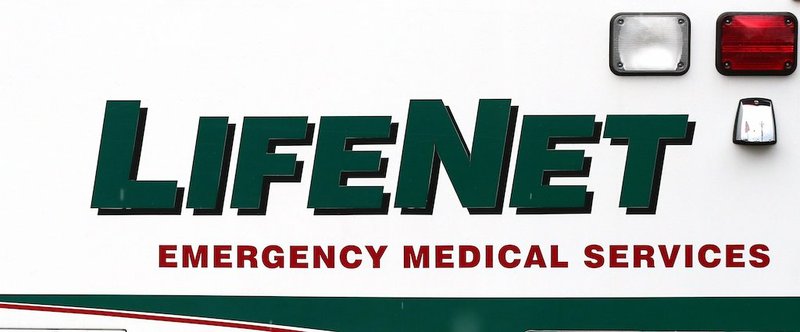First responders are commonly using the term Protocol 36 during the COVID-19 pandemic to alert ambulance crews and other agencies that patients may have symptoms related to the virus.
Jason Gartner, general manager of LifeNet Hot Springs, told The Sentinel-Record the ambulance service averages about four Protocol 36 calls a day in the Hot Springs/Garland County area, but stressed that doesn't necessarily translate to that number of COVID-19 cases.
"We intentionally cast a wide net trying to catch the tuna," he said. "But in the process, we catch a lot of other fish."
The term is part of the changes LifeNet has implemented related to its dispatch system that it uses "whenever there is a communitywide spread of an illness," Ryan Hamilton, communications center manager for LifeNet in Hot Springs, said in a recent news release.
"If dispatchers believe a patient could have COVID-19, they will alert our EMTs, paramedics, and other first responders to wear proper protective gear," Hamilton said.
Hamilton stressed that it is important for any members of the public who regularly monitor emergency radio traffic to understand that it isn't always a virus case.
"Just because the public may hear 'Protocol 36' over the scanner doesn't mean the patient has COVID-19," he said.
"Prior to using this new protocol, many of the calls we went on were dispatched as 'sick person' calls," he said. "Out of precaution, we now treat a lot of those 'sick person' calls as though the person could be experiencing COVID-19. People aren't alarmed when we go on a 'sick person' call, and they should not be alarmed when they hear 'Protocol 36' on the radio, either."
Whenever a person calls 911 for a medical emergency, "LifeNet's trained dispatchers use a series of protocol questions through a software called ProQA," Hamilton said in the release. "That software uses a person's chief complaint and their answers to questions that follow to guide dispatchers in providing appropriate pre-hospital care on the phone, while ensuring they dispatch medical crews in the right mode of response."
He said dispatchers are now using the new protocol to determine if there is a risk of coronavirus exposure from the patient. "We ask callers questions related to symptoms like a fever," he said. This ensures first responders are notified before arrival that a patient "could be" a COVID-19 case.
"For example, a person may call 911 because they fell and injured their leg. This chief complaint would not trigger Protocol 36 because a leg injury is not a symptom associated with COVID-19," Hamilton said. "Our emergency medical dispatchers will then use the Emerging Infectious Diseases Surveillance, or EIDS, tool, along with protocol questions for a fall, to screen and make sure the fall wasn't also related to breathing problems that could be COVID-19 related."
According to LifeNet's website, someone concerned they may have been exposed to the virus should not call for an ambulance to be taken to the emergency department, unless they are experiencing an actual emergency.
"If you believe that you may have been exposed or are concerned about your symptoms, first call your primary care provider and follow their instructions. Most patients diagnosed with COVID-19 experience flu-like symptoms, do not need hospitalization, and can manage their care at home," it says.
If someone is having trouble breathing that they "deem to be emergent" they should call 911, but should also notify the dispatcher of all their symptoms and if they believe they were exposed to the virus or have tested positive for it recently and need assistance because their symptoms have worsened.
"This will allow our EMS crews and the local emergency departments to properly prepare and help prevent the spread of COVID-19 to others in the community while taking care of you," the website says.
Family members of the patient should not go to the hospital with them unless the patient is a minor, under the age of 18, and the family member is their primary caregiver, or the patient is an adult who cannot think or speak for themselves "due to dementia, the illness causing transport, or other underlying reasons," and the family member is the primary caregiver.
"LifeNet will only allow one guardian to accompany a minor or a developmentally disabled person in the ambulance during transport. For all other persons being transported, regardless of illness, LifeNet will no longer allow a person to accompany the patient in the ambulance," it says.
"This is to reduce the risk of passengers catching COVID-19 and to limit the possibility of spreading the virus in our community," it says.
Local on 05/11/2020